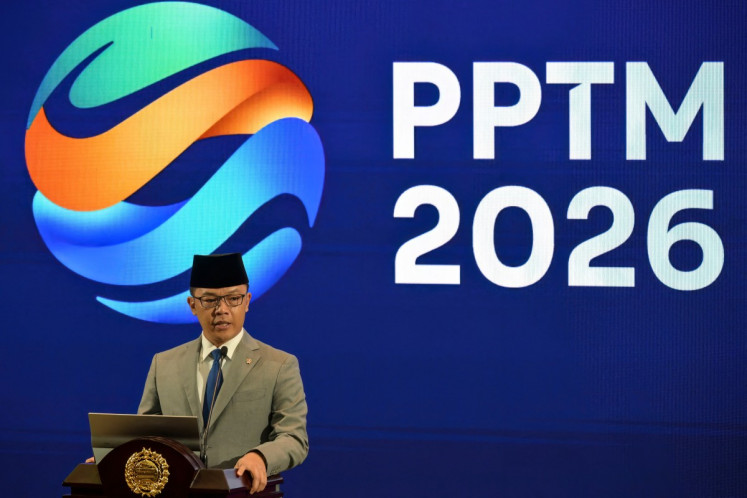Popular Reads
Top Results
Can't find what you're looking for?
View all search resultsPopular Reads
Top Results
Can't find what you're looking for?
View all search resultsEditorial: Dancing with giants
Indonesia, Southeast Asia’s largest economy, increased the depth and breadth of its ties with emerging economic giant India by signing joint venture agreements on Tuesday that will commit US$15 billion worth of new investments and more than double bilateral trade to $25 billion in 2015 from $12 billion last year
Change text size
Gift Premium Articles
to Anyone
I
ndonesia, Southeast Asia’s largest economy, increased the depth and breadth of its ties with emerging economic giant India by signing joint venture agreements on Tuesday that will commit US$15 billion worth of new investments and more than double bilateral trade to $25 billion in 2015 from $12 billion last year.
With the agreements signed by President Susilo Bambang Yudhoyono during his visit to New Delhi earlier this week, Indian companies will develop mineral resources and build basic infrastructure such as railways and airports in Indonesia.
The investment projects Indian companies will implement are precisely the kind of investment Indonesia badly needs to harness its natural resources and develop infrastructure to improve logistics and the interconnectivity of the various islands within the world’s largest archipelagic country.
The lack of infrastructure such as roads, ports, airports and power has been the biggest barrier to new investment in Indonesia. It is not an exaggeration to say that without significant improvements in infrastructure, the country will never be able to realize potential growth of seven to eight percent.
Most analysts predict that with the present infrastructure, Indonesia’s economy may burst at the seams if it is forced to expand by more than 6.5 percent.
The economy grew by an estimated 6 percent last year, a dramatic rise from the 4.5 percent in 2009.
India and Indonesia, both members of the Group of 20 (G20) major economies, have two things in common: Large populations and thriving democracies, though sometimes messy ones.
The recent agreements between the two countries show that India’s insatiable appetite for raw materials like minerals and products such as rubber and palm oil, together with Indonesia’s abundant natural resources, make the two economies complements to each other in many areas.
The main difference is that India, like the other emerging economic powerhouse China, has persistently expanded by almost 10 percent over the past decade, while Indonesia has muddled about between 4.5 and 6.7 percent.
Indonesia-India economic ties have been expanding rapidly, especially after the signing of a joint declaration on strategic partnerships during Yudhoyono’s visit to India in 2005 and the free trade agreement between the South Asian country and the Association of Southeast Asian Nations (ASEAN) in August of 2009.
Indian investors have had a long history in Indonesia, operating in the textile, steel, motorcycle and mining industries, and Indian businesspeople are known to be more capable in adjusting themselves to Indonesia’s economic, social and cultural environment when compared to their counterparts from developed nations.
In 2005, Indonesia launched a strategic partnership agreement with China, and economic linkages between the two have since expanded in leaps and bounds. Chinese investors have poured tens of billions of US dollars into oil, bauxite, nickel mining and smelting, fisheries, power generation, agro-business and infrastructure in various provinces in Indonesia. The two-way trade now exceeds $30 billion.
One year later, Indonesia launched a comprehensive strategic partnership with another Asian economic powerhouse, South Korea, followed by a similar pact with Japan, the world’s second largest economy, in July of 2008.
The benefit of these partnership agreements is that they include broader and better-targeted programs than conventional economic cooperation pacts usually do. They also encompass programs of action in human resource development and institutional capacity building through training programs.
Comprehensive cooperation with China, India, Japan and South Korea has placed Indonesia strategically within the global supply chain.










